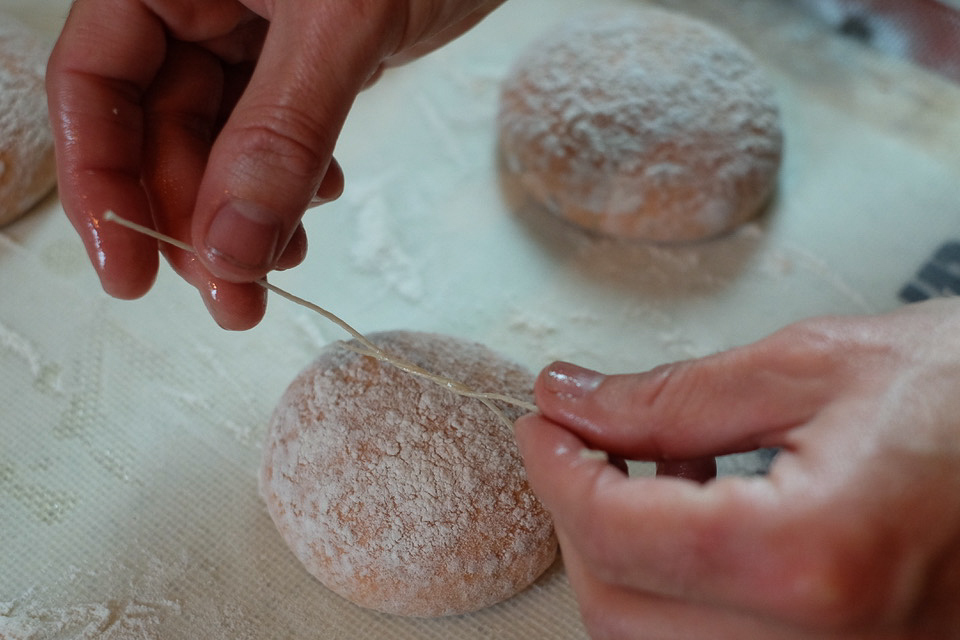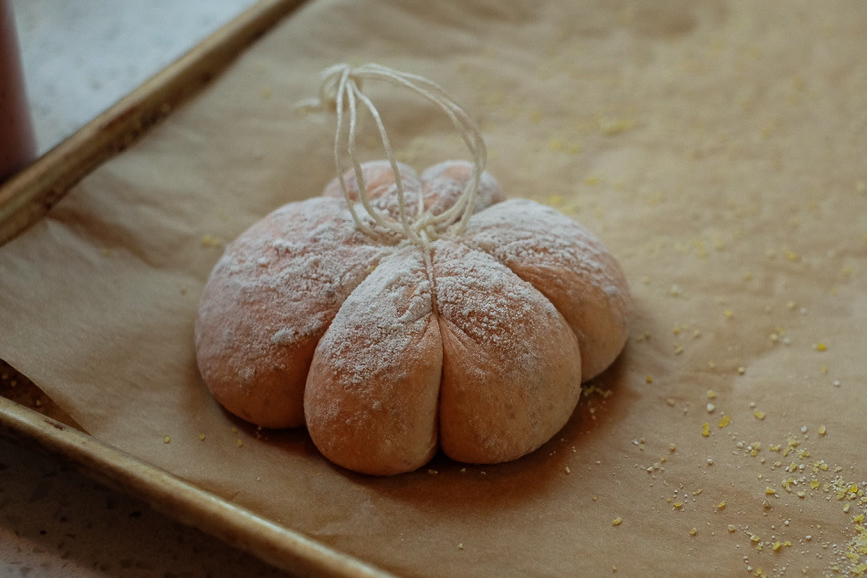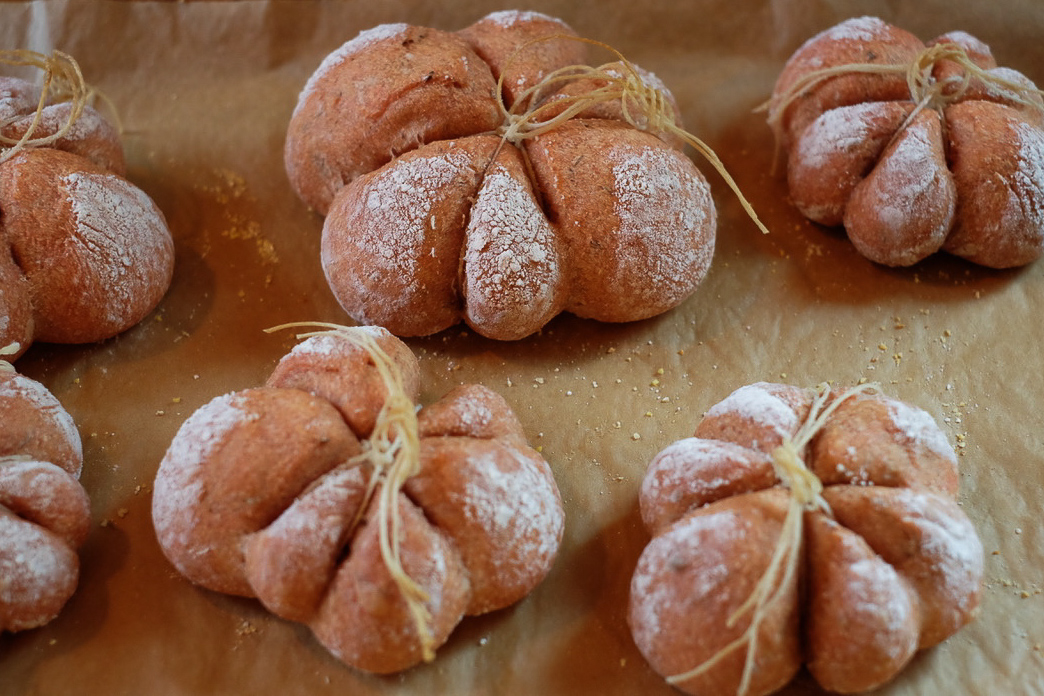Our sourdough Pagnotta alla Zucca (savory pumpkin bread), shaped into pumpkins, is a perfect addition to your seasonal menus. The addition of pumpkin – we actually use kabocha, otherwise known as a Japanese pumpkin – gives the bread a luscious texture, a wonderful golden color, and a subtle nutty sweetness. A butternut squash will work well, too. Fresh sage leaves impart their unique savory note which reminds us so much of fall. A bit of greased cooking twine creates the bread’s signature shape. For more information on sourdough see our post on how to make a classic sourdough loaf.
For the Pumpkin
- 1½ cups cubed kabocha or butternut squash
- 1/3 cup water
- 1/8 teaspoon salt
For the Bread
- Non-chlorinated water
- 100 g levain
- 500 g white bread flour
- 10 g salt
- 25 g water
- 7 fresh sage leaves, torn into small pieces
- Additional flour for dusting
- Cooking twine
- Vegetable oil
Preparing the Pumpkin
In a small saucepan combine the cubed kabocha, 1/3 cup water, and 1/8 teaspoon salt. It won’t seem like a lot of water but trust us. Bring the mix to a bare simmer, reduce the heat to its lowest setting, and cook, covered, for 5 minutes. Transfer half the cubes with a slotted spoon to a plate. Allow the remaining cubes to stand in the pan, covered, with the hot water for an additional 5 minutes. Use a potato masher or fork to blend the kabocha and water. While you don’t need to use a blender, food processor, sieve, or food mill, make the slurry as smooth as possible.
Measure the Liquid
Add additional water to the kabocha slurry for a total weight of 350 g. Note: You can use the slurry when it is warm but not hot.
Autolyze
Place the flour in a large non-reactive container. Separately, whisk the levain into the kabocha slurry. Add the levain mixture to the flour and mix/fold until dry flour no longer remains (the dough will be somewhat sticky). Cover the container loosely and place in an unheated oven; this is a draft-free space and the slight heat from the pilot light will encourage the yeast. Let rest for 25-40 minutes.
Bulk Fermentation
After 25-40 minutes rub half the salt on the surface of the dough and massage it in with half the oil. Flip the bread and repeat with the remaining salt and oil. Next, fold the dough onto itself (like closing an open book) with a spatula or bench knife four times: left to right, top to bottom, right to left, bottom to top. This doesn’t have to be perfect. It is a very gentle method of kneading that will maintain pockets of air and give your bread a nice crumb. Keep the dough in its container in the unlit oven and repeat this folding every 30 minutes for 2 hours. Fold in the reserved pumpkin and sage leaves during the second folding. After 4 folding sessions (i.e., 2 hours), let the dough rest 1-2 hours.
Bench Rest
After the bulk fermentation, transfer the dough onto an unfloured surface and divide it into two even portions with a bench knife. Divide again so you have four pieces of dough. The unfloured surface will create tension which will allow you to gently create ball-shaped pieces (we use a silicone Silpat mat on my counter to create a neat work surface). Use the bench knife to fold the edges of the dough under itself just enough to create a taught surface. Cover with a heavily floured tea towel (you may want to dust the loaves with flour if your tea towel isn’t completely saturated with flour) and let rest for 3-4 hours.
Immediately before baking use the bench knife to reshape the dough into balls, sparingly dusting with flour if necessary. Loosely tie three pieces of greased string around the dough balls to create the pumpkin’s signature ridges. The string should not cut into the dough, though, as it will expand further while in the oven. Transfer the dough pieces to a parchment-lined, lightly polenta-dusted baking sheet.
Baking
Preheat the oven to 400°. Carefully place the baking sheet into the oven and bake for 25-30 minutes; the edges will become toasty and the internal temperature should reach 200° when done. Once cool enough to handle remove the strings.





